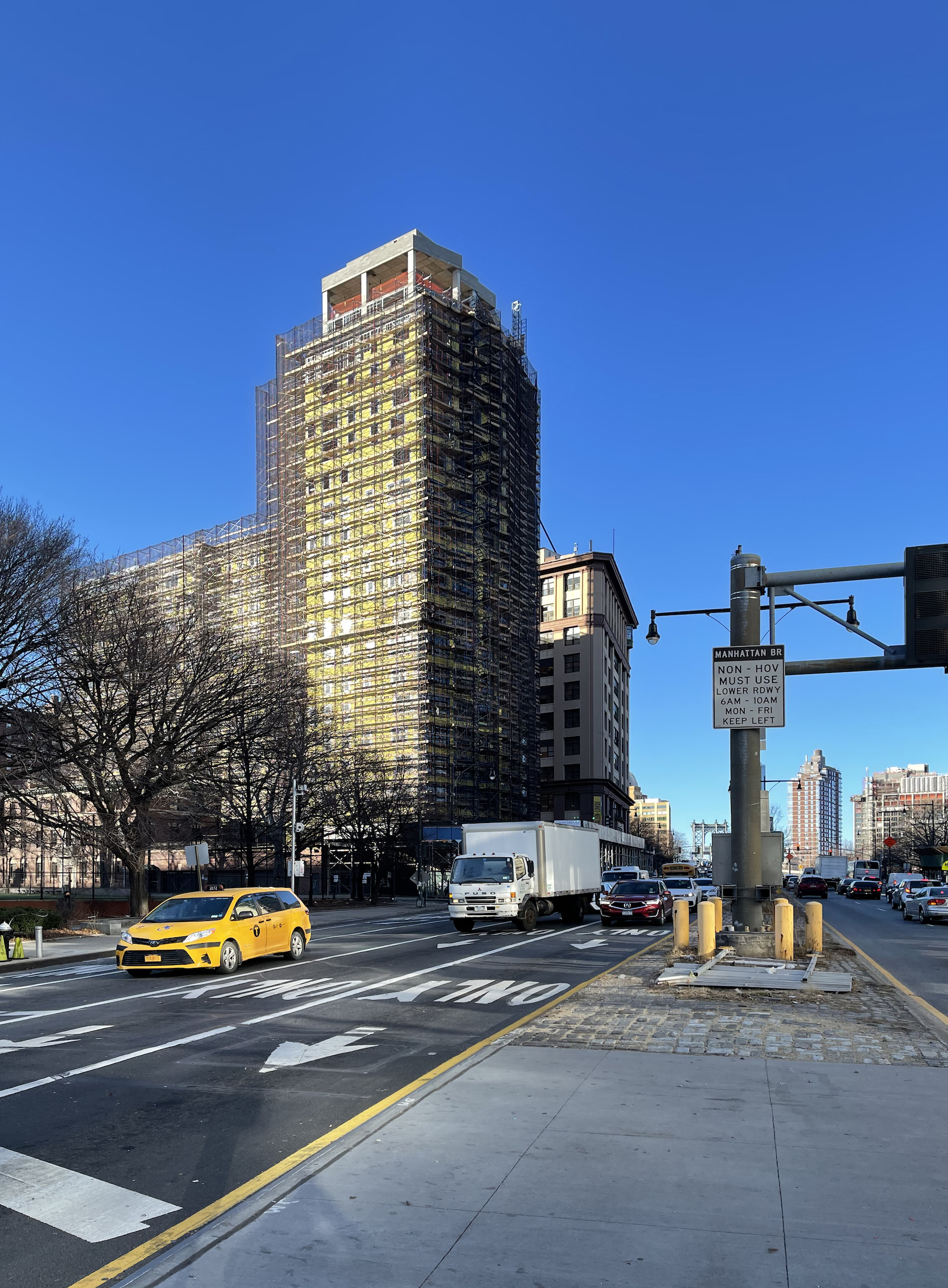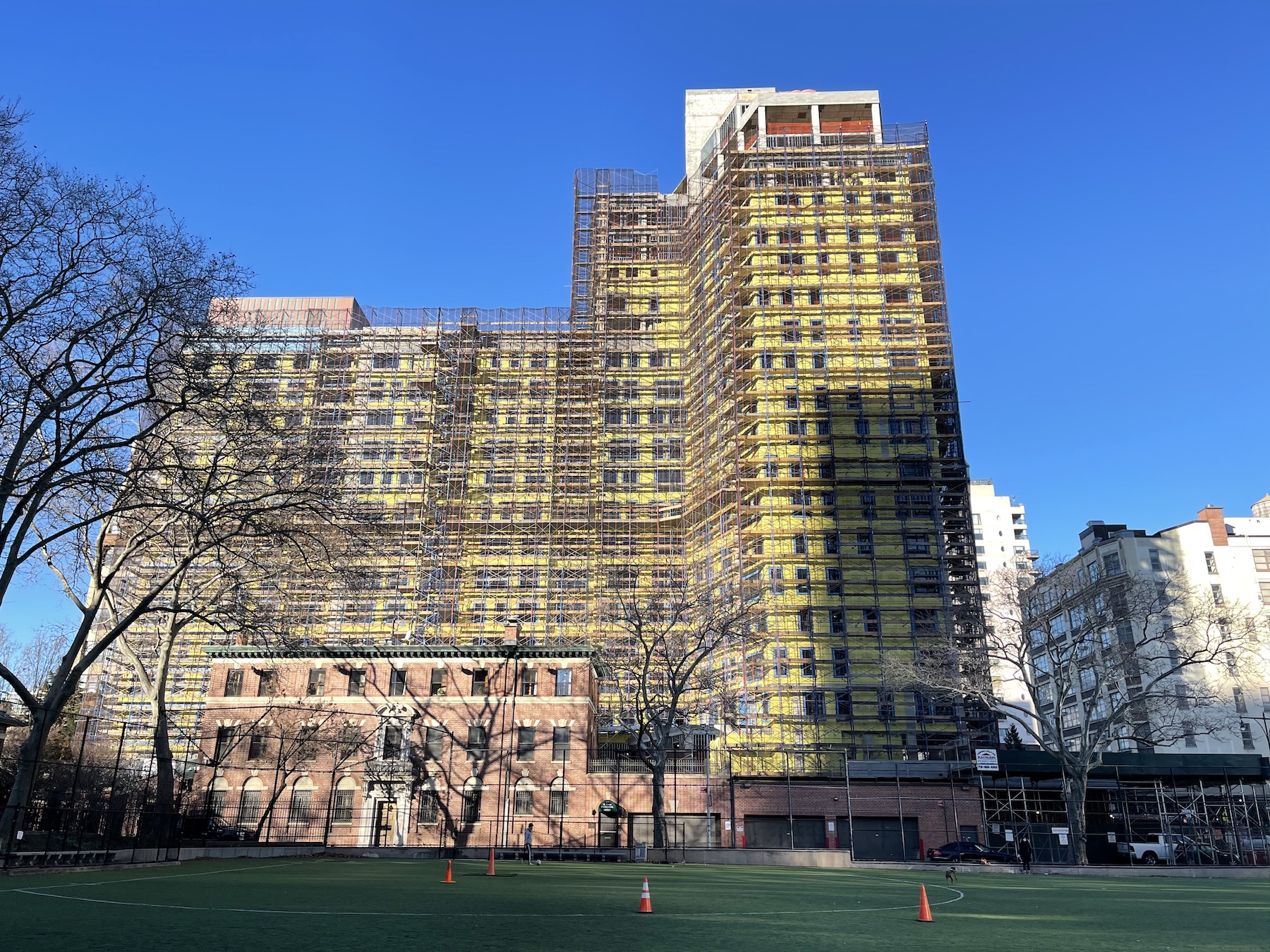Among its many legendary attributes, New York City is known for its rabid sports fans, foldable pizza slices, and wealth of arts and culture. But it’s the city’s iconic architecture that perhaps best defines its footprint I n the northeast. When Delshah Capital and OTL Enterprises selected a team to design and build a 20-story high rise in the bustling borough of Brooklyn, it was literally Go Big or Go Home.
The Challenge
The 211-foot stunner situated at 22 Chapel Street presented an exciting opportunity to build a towering structure to compliment the revitalization of downtown Brooklyn. Designed by CetraRuddy Architecture, the property is located at the south end of the Manhattan Bridge, presenting it with a high amount of exposure to admirers near and far.
Housed within its 167,000 square feet will be 180 residential units, retail space, and a community facility. Since the building needs to withstand the extremes of New York weather – including punishing rain and snow – a superior weather barrier system was a must. Additionally, the building exterior required a barrier material that would work well with metal panels and provide high levels of energy efficiency. That’s when two Georgia-Pacific innovative water-resistive barrier/air barrier (WRB/AB) solutions answered the call: DensElement® Barrier System and DensDefy™ Accessories.
Not Just a Square Box
The building’s southern-facing façade and tower were uniquely designed to allow for exceptional views and to flood the interior with natural light. “It’s not just a square box,” said Darren Glisan, senior project manager at Titanium Construction Services, the general contracting firm hired for the job. “The façade elevation is highly complex in that the slab edges do not align with one another at the east end of the building. That was a fun challenge,” Glisan continued.

Another notable part of the job was that DensElement Barrier System and DensDefy Accessories weren’t initially specified. The façade design originally called for porcelain tile and sheathing that was specifically designed for that material. However, the porcelain was later shelved for metal panels since they were more cost-efficient and easier to work with.
That’s why Willis Ting, project manager and senior associate at CetraRuddy Architecture, turned to DensElement Barrier System, which integrates gypsum sheathing with a water-resistive barrier and an air barrier, along with DensDefy Accessories to seal the building envelope. According to Ting, “The DensElement Barrier System (and DensDefy Accessories work) better with certain products – and metal panels are one of them. And, considering all the seams that have to be protected from the weather, we needed to choose the best (system) for the job.”
Thornton Tomasetti, the façade consultants and structural engineers, still need proof before moving forward. “Thornton Tomasetti are serious engineers. They know their stuff and they don’t compromise,” remarked Glisan. The team conducted a WUFI analysis, the industry’s most advanced analytical simulation of hygrothermic (the combination of heat and moisture) conditions in a building envelope. The results spoke for themselves, demonstrating that DensElement Barrier System with DensDefy Accessories was indeed the best water-resistive/air barrier for the job. Ting noted convincingly, “It’s a one-stop shop. (DensElement and DensDefy make) the design team feel secure that we’re handing off the right products to the construction team.”
Exceeding Sky-High Expectations
Once the build began, DensElement Barrier System and DensDefy Accessories were put to the true test. “You need to make sure the whole building is sealed the right way. By selecting the right (products), we know the building will not leak, is fully airtight, and the insulation will be protected,” said Ting.
Among the advantages of DensDefy Accessories are the simplicity and efficiency of installation, even in wet weather. DensDefy™ Liquid Flashing waterproofing, adhesive, and detailing compound seals rough openings, penetrations, joints, and seams. DensDefy™ Transition Membrane is a self-adhered, butyl-based membrane used on drift or control joints, vertical expansion joints, and gaps greater than 1” to ensure envelope continuity. “Together, they perform as though they’re a waterproofing membrane, and that simplicity is their greatest benefit,” said Glisan of DensDefy Accessories’ performance on the job.
While “time is money” is a figure of speech for some, for the team on a build, it’s what drives their business. Glisan went on to discuss how waterproofing materials have only gotten more complex, specifically referring to liquid-applied membranes, which often require installers to double-back to ensure the material specifications are being followed.
Another challenge when roll-on-specific applications are used is the material driving onto finished elements of the building, like windows and the floors below. DensElement Barrier System removed any worry about spending extra time on quality control.
The heightened level of durability and efficiency delivered by the Georgia-Pacific products was echoed by everyone contributing to the project. After using DensElement Barrier System and DensDefy Accessories for the first time, John Vennera, field supervisor at PG New York, remarked, “we’re closing the building up way quicker than normal, which allows the other trades to move along. And, obviously, any client would appreciate that.”
Mike Whitmore, the purchasing director at PG New York, not only said that the speed of the installation process cut labor costs, but also the two-in-one combination of sheathing and weather resistance for a set price from one company made purchasing faster and easier. “There were even (fewer) bills for scaffolding because the guys spent less time on it,” said Whitmore. “Combining the waterproofing and sheathing is good because when it comes to warranty time, you have one single source.”
DensElement Barrier System and DensDefy Accessories can be installed without damage in rain and even in New York’s winter weather. This helped streamline the installation and overall production schedule by allowing the window installers to move in quicker and, in turn, close the building faster so interior work could stay on schedule.
A product is only as good as the company standing behind it. From the development of innovative building materials to the distribution network making sure they arrive on time, Georgia-Pacific is proud to be part of Brooklyn’s newest landmark building. It’s been said that everyone in New York has a story; thanks to those who put their trust in us at 22 Chapel Street, we do, too. 20 stories, to be exact.
Related Stories
| Aug 11, 2010
Study explains the financial value of green commercial buildings
Green building may be booming, especially in the Northwest, but the claims made for high-performance buildings have been slow to gain traction in the financial community. Appraisers, lenders, investors and brokers have found it difficult to confirm the value of high-performance green features and related savings. A new study of office buildings identifies how high-performance green features and systems can increase the value of commercial buildings.
| Aug 11, 2010
Architecture Billings Index flat in May, according to AIA
After a slight decline in April, the Architecture Billings Index was up a tenth of a point to 42.9 in May. As a leading economic indicator of construction activity, the ABI reflects the approximate nine to twelve month lag time between architecture billings and construction spending. Any score above 50 indicates an increase in billings.
| Aug 11, 2010
Free-span solar energy system installed at REM Eyewear headquarters
The first cable-suspended free-span solar energy system was completed today over the REM Eyewear headquarters parking lot in Sun Valley, Calif. The patented, cable-supported photovoltaic system created by P4P Energy is expected to generate 40,877 kilowatt-hours of renewable electricity per year, enough to power five to six single family homes and to prevent 1.5 million pounds of carbon from being released into the atmosphere.
| Aug 11, 2010
Architecture Billings Index drops to lowest level since June
Another stall in the recovery for the construction industry as the Architecture Billings Index (ABI) dropped to its lowest level since June. The American Institute of Architects (AIA) reported the August ABI rating was 41.7, down slightly from 43.1 in July. This score indicates a decline in demand for design services (any score above 50 indicates an increase in billings).
| Aug 11, 2010
Construction employment declined in 333 of 352 metro areas in June
Construction employment declined in all but 19 communities nationwide this June as compared to June-2008, according to a new analysis of metropolitan-area employment data released today by the Associated General Contractors of America. The analysis shows that few places in America have been spared the widespread downturn in construction employment over the past year.
| Aug 11, 2010
Jacobs, Hensel Phelps among the nation's 50 largest design-build contractors
A ranking of the Top 50 Design-Build Contractors based on Building Design+Construction's 2009 Giants 300 survey. For more Giants 300 rankings, visit http://www.BDCnetwork.com/Giants
| Aug 11, 2010
Construction unemployment rises to 17.1% as another 64,000 construction workers are laid off in September
The national unemployment rate for the construction industry rose to 17.1 percent as another 64,000 construction workers lost their jobs in September, according to an analysis of new employment data released today. With 80 percent of layoffs occurring in nonresidential construction, Ken Simonson, chief economist for the Associated General Contractors of America, said the decline in nonresidential construction has eclipsed housing’s problems.
| Aug 11, 2010
Billings at U.S. architecture firms exceeds $40 billion annually
In the three-year period leading up to the current recession, gross billings at U.S. architecture firms increased nearly $16 billion from 2005 and totaled $44.3 billion in 2008. This equates to 54 percent growth over the three-year period with annual growth of about 16 percent. These findings are from the American Institute of Architects (AIA) Business of Architecture: AIA Survey Report on Firm Characteristics.
| Aug 11, 2010
CHPS debuts high-performance building products database
The Collaborative for High Performance Schools (CHPS) made a new tool available to product manufacturers to help customers identify building products that contribute to sustainable, healthy, built environments. The tool is an online, searchable database where manufacturers can list products that have met certain environmental or health standards ranging from recycled content to materials that contribute to improved indoor air quality.






